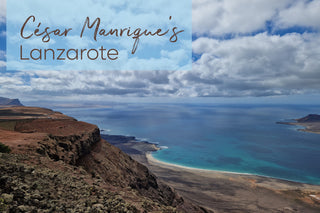One of my absolute highlights of going to Lanzarote was visiting 3 places designed by the artist César Manrique.
César Manrique (1919-1992) was born in Lanzarote and his work has had a huge impact on the island. As well as his tourist sites, he also designed the colourful logo for Cicar - we hired a car from them on both Lanzarote and Fuerteventura, and you will see their rentals everywhere!
What will blow you away about Manrique's art is how he was able to fuse architecture, design and art with nature. Everything appears in harmony with the environment as if formed by nature, rather than intruding and disrupting nature. Overall they are spectacular places, full of tiny details from door handles to curving staircases. ‘Skylights’ that flood rooms with natural light. Roofs and walls are built with the same volcanic rock as the surrounding landscape so that it all blends in.
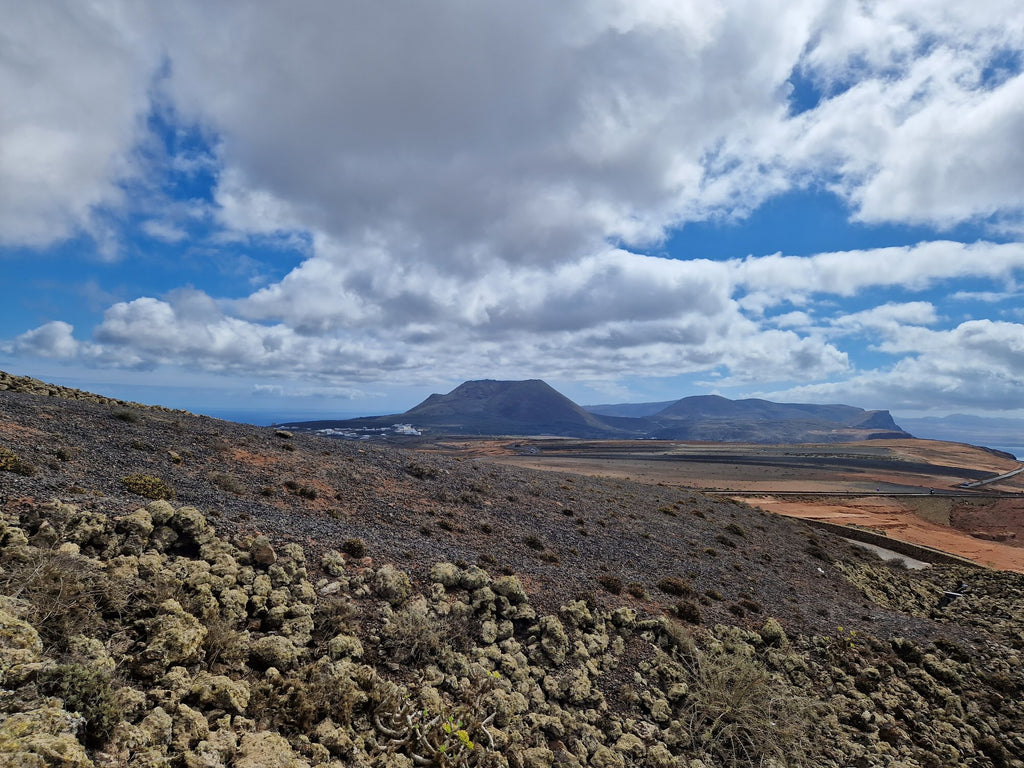
You will find Manrique’s art across the Canary Islands, but especially on his home island of Lanzarote. There are 7 places you can visit, as well as a restaurant. The restaurant, El Diablo, is in the Timanfaya National Park - you will need a ticket for Montañas del Fuego.
We visited 3 places within a day - Jardín de Cactus, Los Jameos del Agua, and Mirador del Río. We were advised at our hotel that Jardín de Cactus and Los Jameos del Agua were better visited early as there could be queues, and Jardín de Cactus was our first port of call.
Even the drive was incredible - passing through little towns, bodegas and the otherworldly landscapes of red, black and ochre volcanoes and stretches of massive lava boulders.
Jardín de Cactus

This place was Manrique’s final work of art in Lanzarote. It contains about 4500 cacti from around 500 different species, from 5 continents! Once inside, apart from little spaces like the gift shop, we found that there was plenty of room to explore, sometimes feeling like we had entered an extraordinary world just for us.
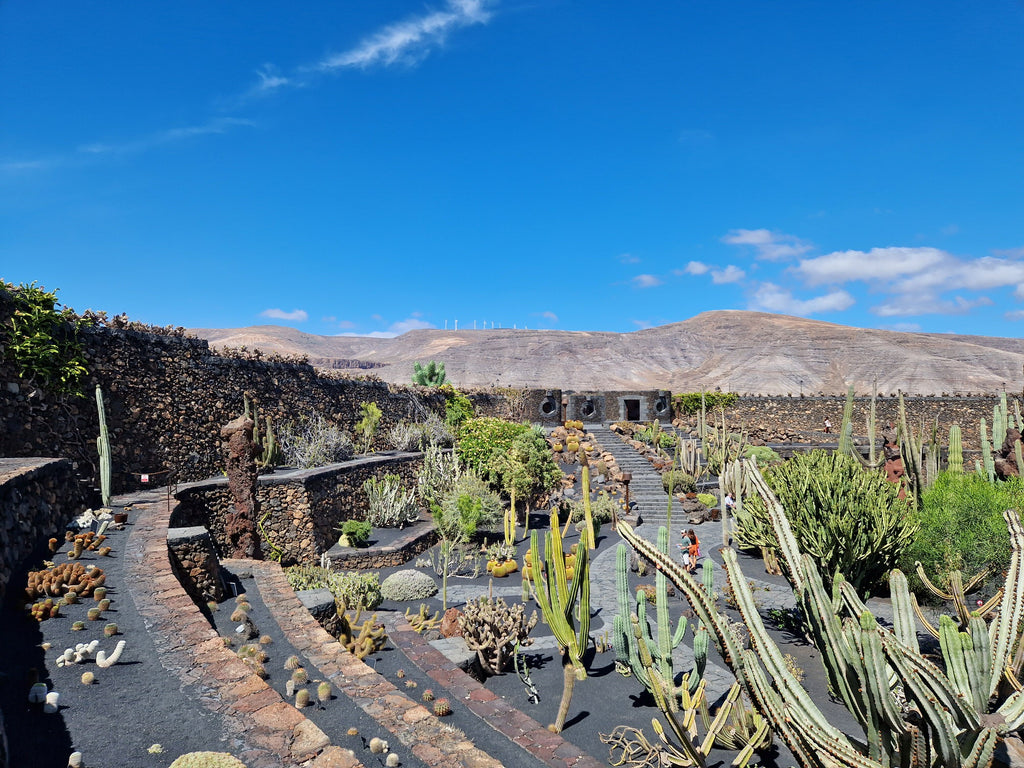
The garden is arranged over terraces that you can walk along, as well as a central section with paths to wander around. Rock sculptures set off cacti sculptures, everything feels harmonious. When you’re standing on the terraces or looking out across the garden from the windmill, you will see how the walls of the garden seamlessly blend into the mountains beyond.
Near the windmill, a beautiful spiral staircase leads down to a cafe / restaurant. It’s another perfect example of Manrique’s phenomenal ability to blend art, architecture and landscape together - the dome seamlessly blends with the walls of the garden, and when you enter it, the glass windows provide such a beautiful outlook.
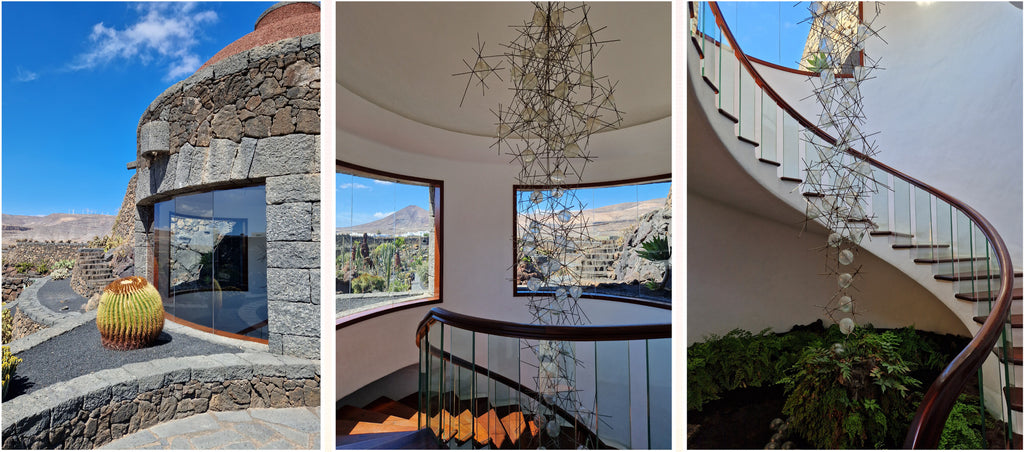
Los Jameos del Agua
A collapsed volcanic tube becomes a place that feels like a movie set in Manrique’s first site on Lanzarote.
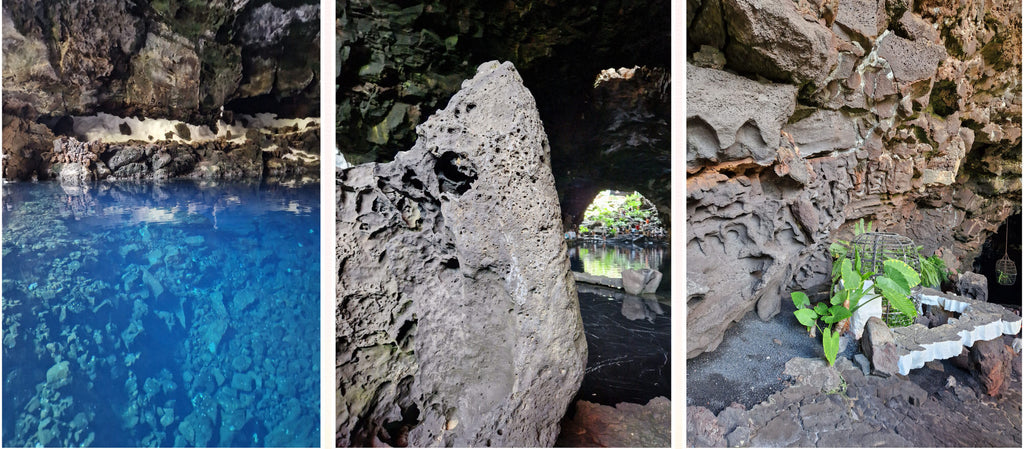
There’s a natural lake inside the cave, where the water runs so clear and so deep, but perhaps smaller than you might think. The water can run onto the path you walk around - and although rocky, many of us ended up taking our shoes off to walk as it was ankle-deep in some sections - so you may want to be prepared with an extra pair of socks or a tiny hand towel in your bag.
The way it has been designed and built is stunning. Head out to the artificial lake area and you will really feel like you’re in a movie. Beautiful blues are set off against crisp whites, sunshine casting silhouettes of palm trees onto the water, and there's semi-hidden seating with tables and chairs set into the rock walls.
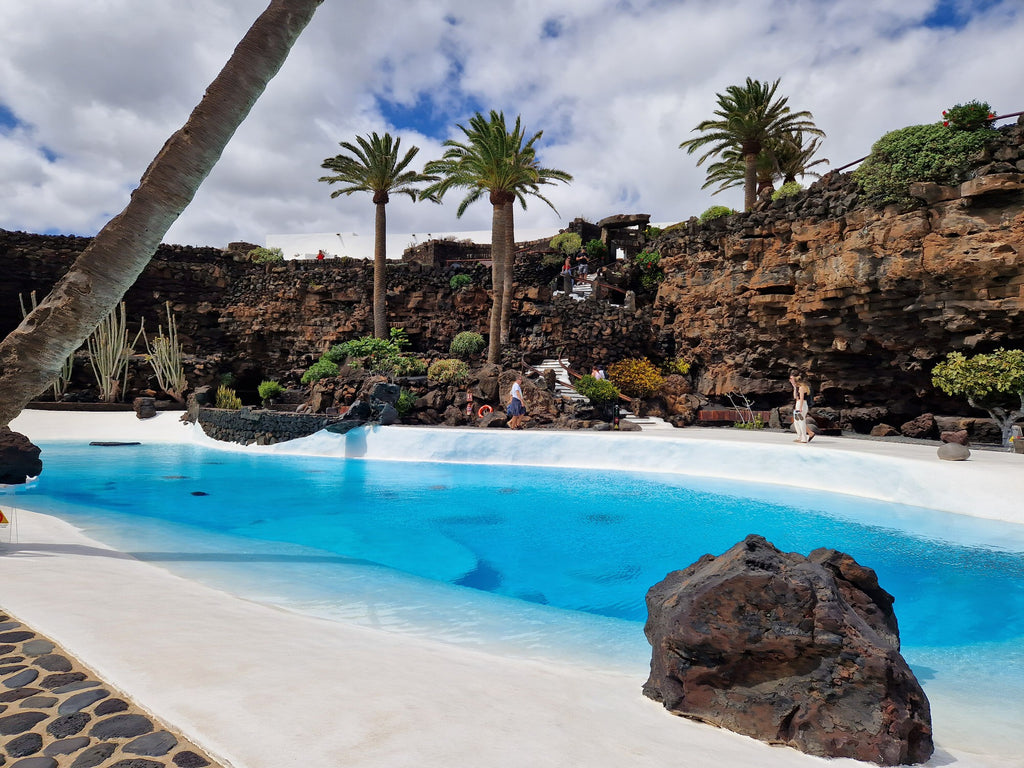
The auditorium is well worth a visit too, along with Casa de los Volcanes, a museum with exhibits taking you through volcanoes and the history, in particular Lanzarote. There are references to training on the island in preparation for Mars missions - and the link between geological aspects of the island and its similarities to Mars.
Mirador del Río
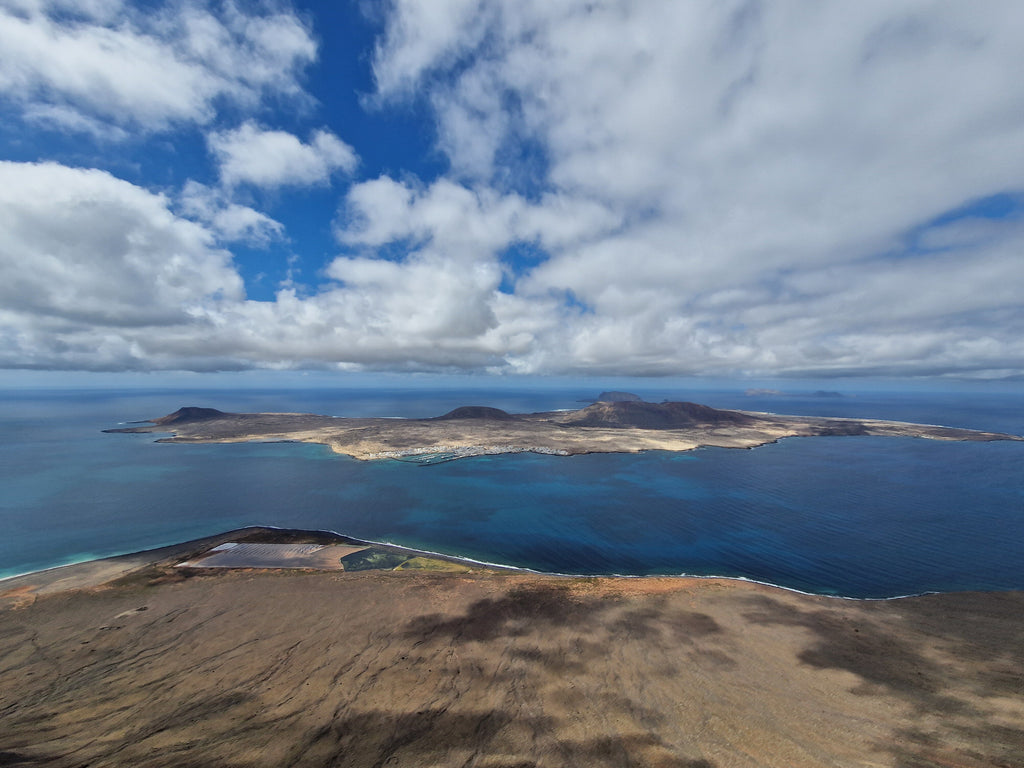

Mirador del Río has breathtaking views of the Strait del Río and La Graciosa and the Chinijo Archipelago Natural Park. I was completely mesmerised by how the mountains and landscape have carved themselves, along with the colours of the sky, water and the Salinas at the base of the cliff. You can just imagine that if you were to look at the viewpoint from the other side, all you might see are silhouettes of people against glass windows that seem to be part of the rocks of the cliff.
Find out more about César Manrique and seeing his work:
The CACT (Centres of Art, Culture and Tourism) links are very helpful for planning your visit, with useful tips about footwear, and on-site places to get refreshments or a bite to eat.
Hello Canary Islands also has useful articles.
Other useful information
https://fcmanrique.org/en/inicio/
https://www.architectural-review.com/essays/reputations/cesar-manrique-1919-1992
https://www.bbc.com/travel/article/20190716-the-spanish-island-where-astronauts-prepare-for-mars

